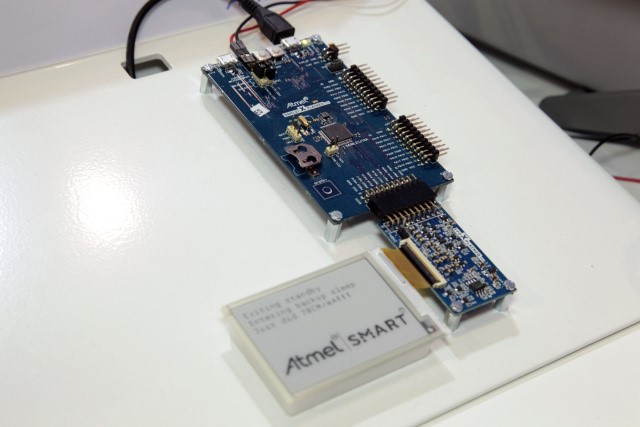
The number of items joining the cult of Internet-of-Things is reaching astronomical proportions, connecting dishwashers, bicycles, planet vases, and practically anything that can slapped with a power-chip to the Internet. As such, the demand for low-power chips is also growing in tandem, and now, a new extremely low power microcontroller can expand the IoT roster even further, creating an entirely new class of Internet-connected sensors with its ability to run for 10 years on a single battery charge.
The device in question is the new SAM L21 32-bit ARM family of microcontrollers (MCUs) made by the San Jose-based MCU maker, Atmel, a series of devices so low-power, that they only draw 35 microamps per megahertz of processing power when active and less than 200 nanoamps when in sleep mode. To put this into perspective, the chip is so low power that it can even run draw energy from the body itself, explains Andreas Eieland, Atmel’s Director of Product Marketing for low-power products.
In addition to reduced power cost per MHz, the SAM L21’s heightened performance stems from the fact that it includes multiple sleep modes, allowing it to further communicate with connected devices despite being in such low-power state, whereas the sleep of traditional low-power chips sees everything but the clock function shut down, forcing it to “awaken” every time a connected device needs to communicate.
The chips include a 42 MHz Cortex M0 + CPU core, currently the smallest 32-bit ARM processor on the market, up to 256 kilobytes of Flash memory, up to 32 kilobytes of static RAM, and up to 8 kb of separate low-power static RAM that remains powered during all but one of the sleep modes.
Needless to say, these specs aren’t enough to run Linux persay, but its specs pack enough computing power and memory to run small programs, power hardware interfaces, stream media from a USB or other external peripheral, and gather and send sensor data.
The availability and pricing scheme have yet to be revealed, but developers can currently obtain the device integrated into a rapid prototyping board called SAML21 Xplained Pro (XPRO) which includes onboard debugging and power usage profiling along with dedicated software to text these features.
Source: Ars Technica
Advertisement
Learn more about Electronic Products Magazine





